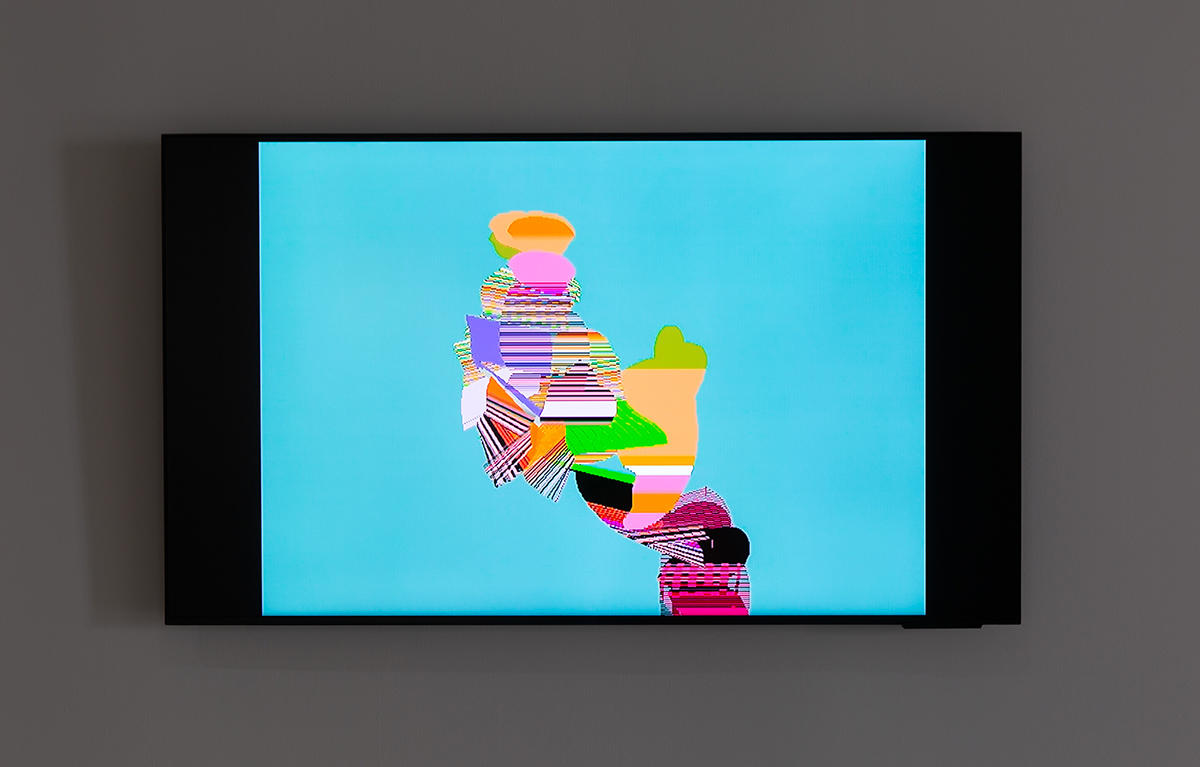
Samia Halaby and Ellen Pau are both towering figures in the history of experimental art, developing screen works during the 1980s when institutions and the market were more interested in painting and postmodernism. During the opening events of the 13th Taipei Biennial, they discussed their methods for making early computer and video art respectively—and it turns out they have little in common. Pau did not do any art training, and became interested in the aesthetics of science, technology and media while working as a radiologist in Hong Kong. Halaby went from oil-painting in New York to what she called ‘kinetic painting,’ coded onto a computer screen with an early PC. She saw her colourful, ever moving compositions to be a development of her abstractions on canvas, and ultimately a development of Euro-American modernism.
Bringing these figures together in Taipei and placing their work on small screens around the Taipei Fine Arts Museum’s galleries, brings context to a show whose ‘Small World’ theme refers to the pandemic’s creation of an interconnected, small screen experience. The lockdowns of the early 2020s enabled us to see a sensibility of isolation within their experimentalism, a shared idea of the televisual as a particular kind of aesthetic experience. The detail of Halaby’s digital animations and Pau’s early video camera effects came out of their fascination with new technologies. Pau’s repetitions and loops, and Halaby’s synthetic combinations of shape and colour, come from their fascination with new technologies, new media and mediums by which novel affects come into being.
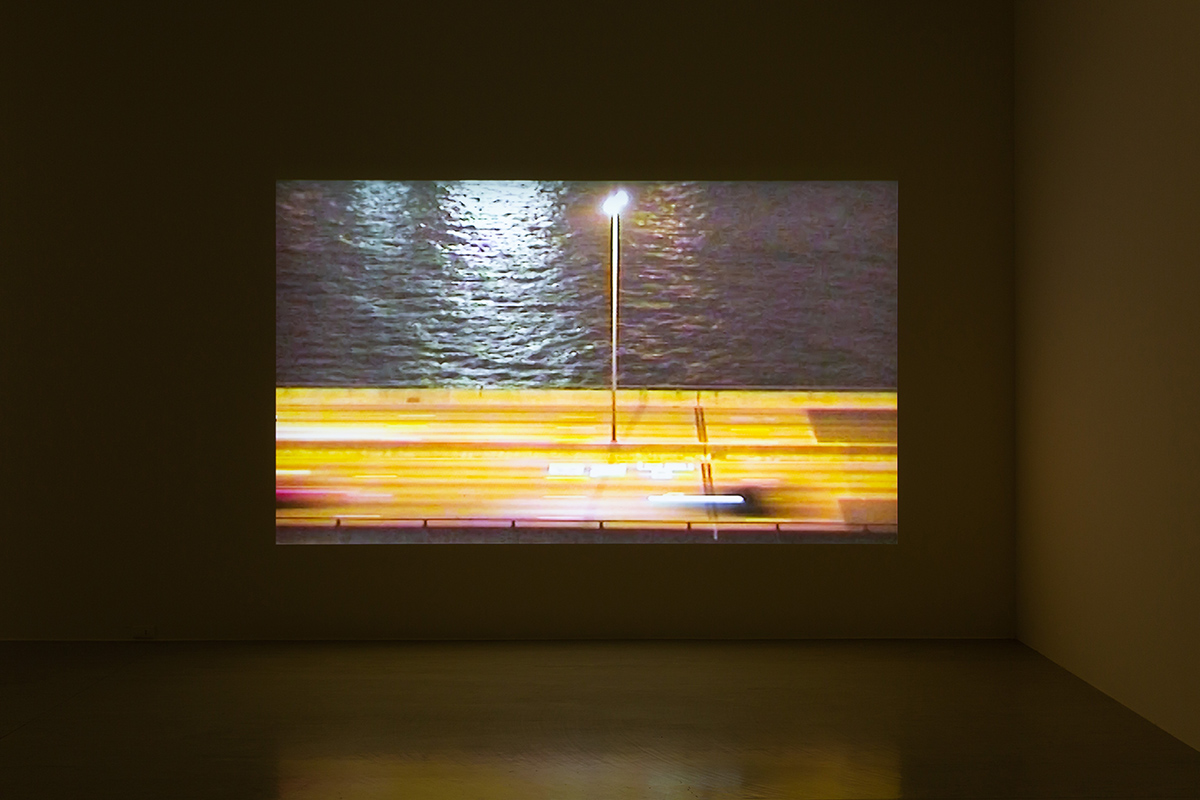
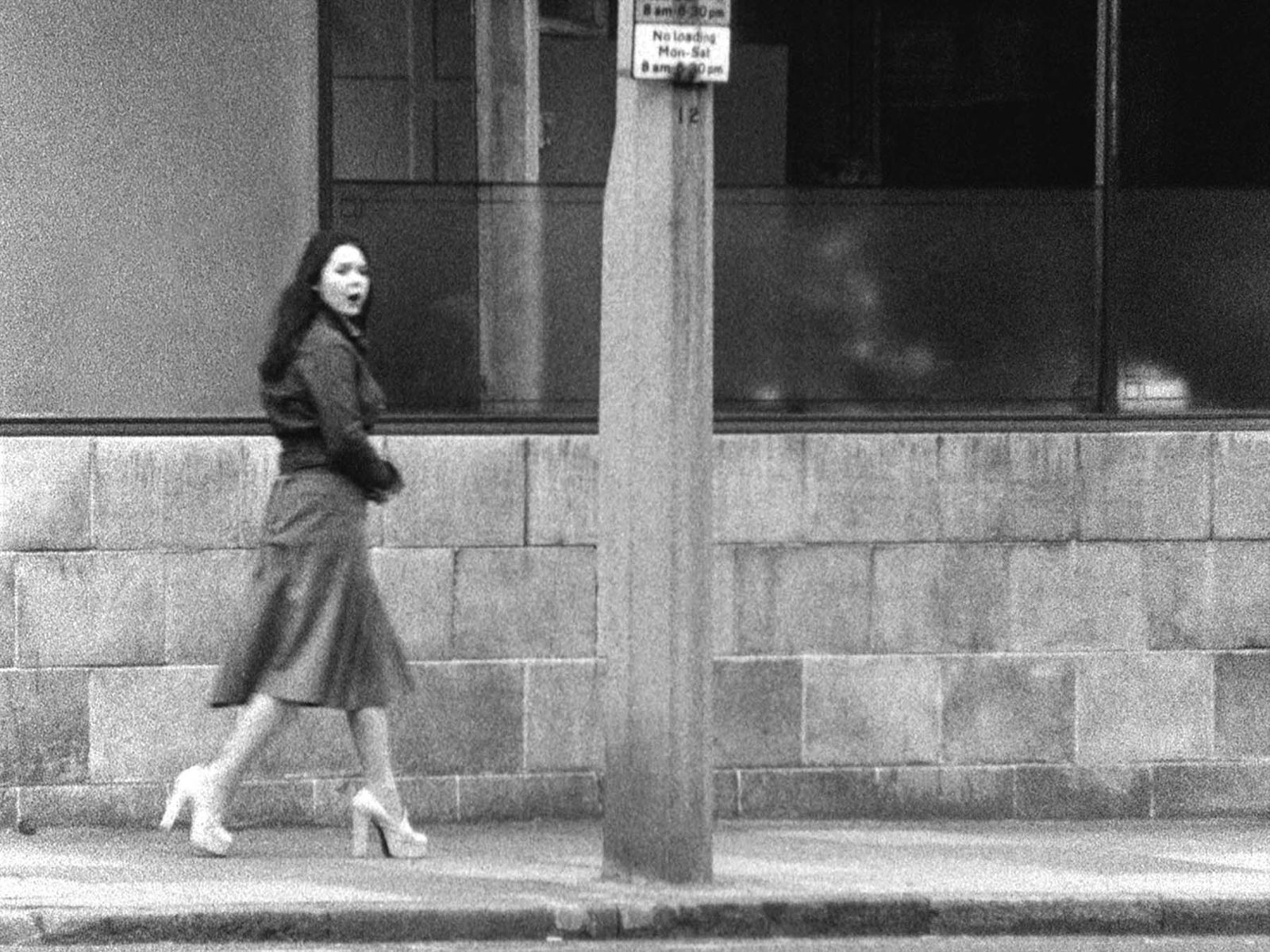
There are other pathbreaking films and videos on show in the Taipei Biennial including a dedicated survey of the prolific film and video artist John Smith, featuring sped up and slowed down found footage, and collages of everyday scenes atop disjointed voiceovers. Lost Sound (1998-2001), a collaboration with Graeme Miller, collates recordings of cassette tapes found on UK streets. Warped sounds of children’s music, pop and reggae are played along with scenes from the streets they were found on. The footage is reversed and repeated: cars pass over and again, people go forward and backward resulting in a vertigo of space and time against the fuzzy sound of a spooling cassette. In Smith’s The Girl Chewing Gum (1976) a voice directs people on the street to perform what we see on screen, to cross the road, light a cigarette, or to walk on by. The passage of people, vehicles and time passing on a clock are made complicit in the director’s intentions, becoming more than a simple document of the street.
An installation of Takashi Ito’s Spacy (1981) contains a room of screens synchronised to spin and turn from a photograph of a gymnasium to footage of the same gymnasium, or perhaps it is another picture, the camera twisting and vaulting through gymnasiums inside gymnasiums. If this sounds confusing, it’s because it is. And it is barely watchable, like Michael Snow on crystal meth, its recursions nauseating and frustrating. Again, our attention is caught by the possibilities offered by simple screen media, and by experiments with the filmic duration.
It is not a new idea to scatter archival pieces throughout biennials, to endorse its theme with older, established artists. The effect in Taipei is to ground the more recent, and more numerous, contemporary works with a sense of the (art) history of experimental art. Many works return to the affective dimension of visual art, after the curatorial thesis that this ‘return’ has been made richer by the shared isolations of the pandemic. In dj sniff’s Transformer (2023), a clutter of turntables and effects pedals refers to the history of turntablism, another 1980s throwback, while an ambitious installation by Jacqueline Kiyomi Gork consists of blow-up walls and a multi-channel sound piece. In Gork's Not Exactly (Whatever the New Key is) (2023) the walls inflate around us, then deflate to the sound of a multi-channel, choral composition. The inflation invites claustrophobia, while the sound installation captures our relief at the sinking walls with the beauty of the human voice, in harmony. Claustrophobia and relief, inhalation and exhalation, quickly follow each other. In Wang Wei's Mirror (2023), two walls of mosaic tiles reflect the view in front of them, creating cubed images of gallery corridors and atriums that extend sixteen meters through the Taipei Fine Art Museum. These works are simple in their conception, relying on scale to create aesthetic impact from their abstractions.
%2C%202017-.jpg)
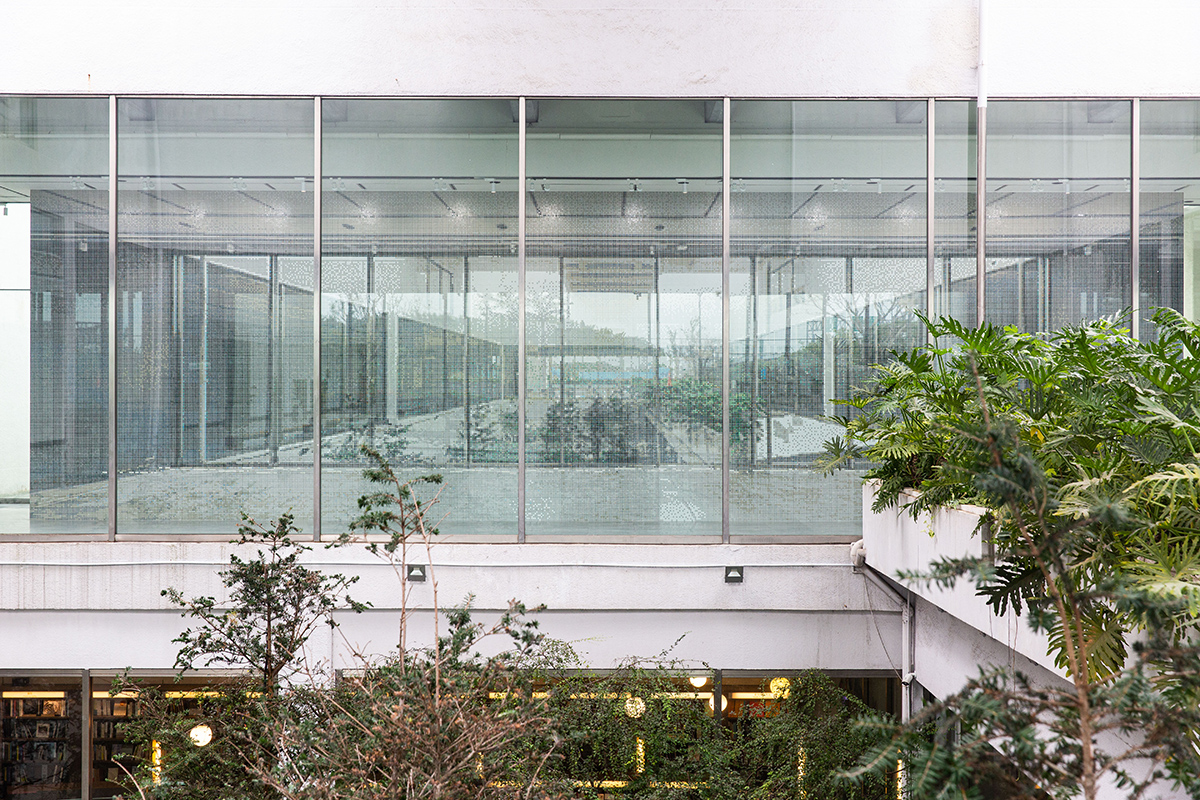
While experimental art was one current in Taipei, another illustration of the ‘Small World’ lay in a powerful cinema program. Here too we saw a return to the simplest of mechanisms by which art might be experienced, in filmmaking about everyday life amid the pressures of world governments and the global economy. Su Yu-Hsin’s Particular Waters (2023) follows a water truck whose driver drains local streams to provide for one of the semiconductor factories in Taiwan. During the dry winter this water is scarce in Taiwan, as the rivers that typically feed these factories dry up, and water trucks pump the scarce resource out of its natural courses. In Jumana Manna’s Foragers (2022) the scarce resource is akkoub, a plant used in traditional Palestinian cooking. The Israeli government has banned the gathering of the akkoub plant from the hills of the occupied West Bank, instead setting up an industry to sell it from Israeli-owned farms. Palestinians hide in bushes and grasses from the authorities, who search for them in jeeps.
Another remarkable film is Zhou Tao’s Scroll of Data Centres (2023), though a data centre features only in its first and last minutes. Footage of blinking servers quickly shifts to the fertile hills around Tao’s home city of Guangzhou, where abundant greenery is harvested by barefoot elderly peasants stooping to carry loaded baskets on their backs. The filmmaker keeps an unfocused lens on a surreal ruralism, blurring in and out of focus as one peasant smokes, another walks, another harvests. Zhou documents a class of people who have been all but forgotten amid the boom of Chinese cities.
The quality of the Biennial comes from the consistency of the vision of its artists. It may be the appointment of three curators from very different backgrounds: Freya Chou, from Taiwan now living in Hong Kong, Palestinian Reem Shadid who works in Beirut, and Brian Kuan Wood, one of e-flux journal’s founders in New York. There seems to be a consensus on artworks that were conceptually clear, translating across numerous cultural contexts. The shared appointment covers the geography of much of the world, but resulted in collected works that are less about geography than about the most basic of human experiences, whether looking and listening (Pau, Halaby, Smith, Ito, sniff, Gork, Wang), or eating and harvesting food (Manna, Zhou).
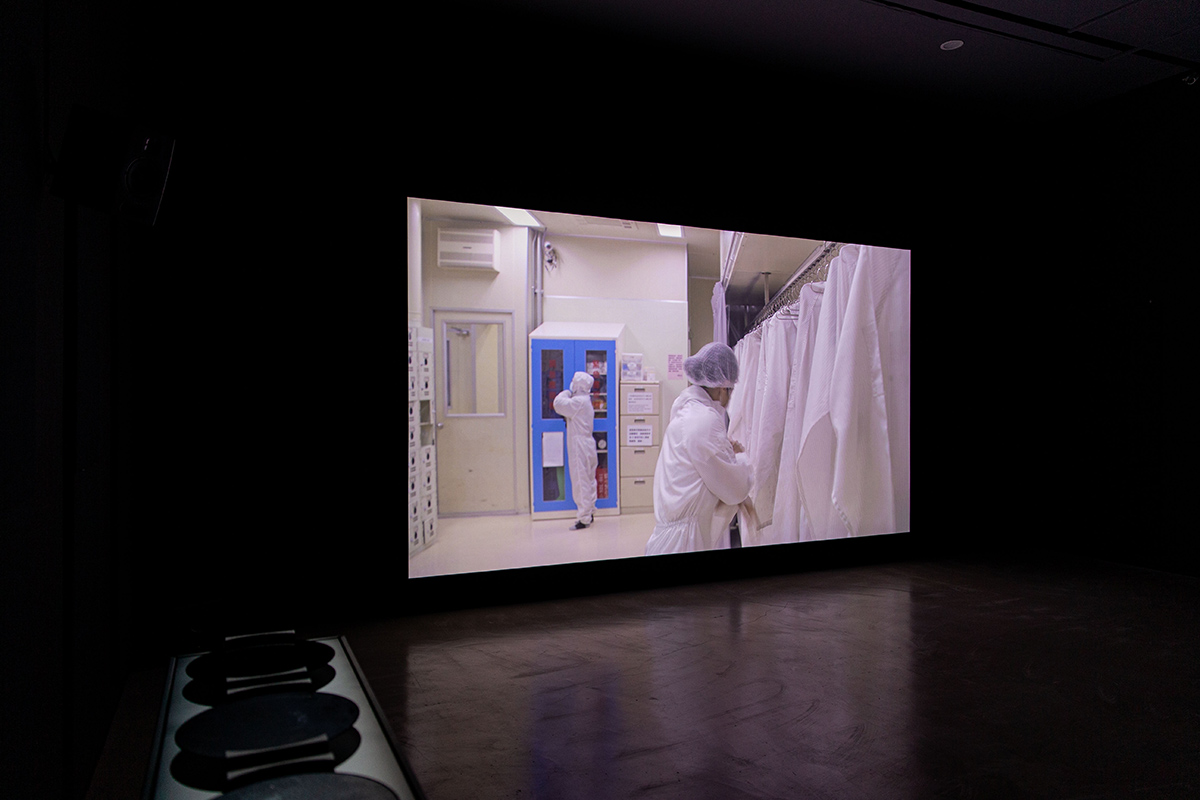
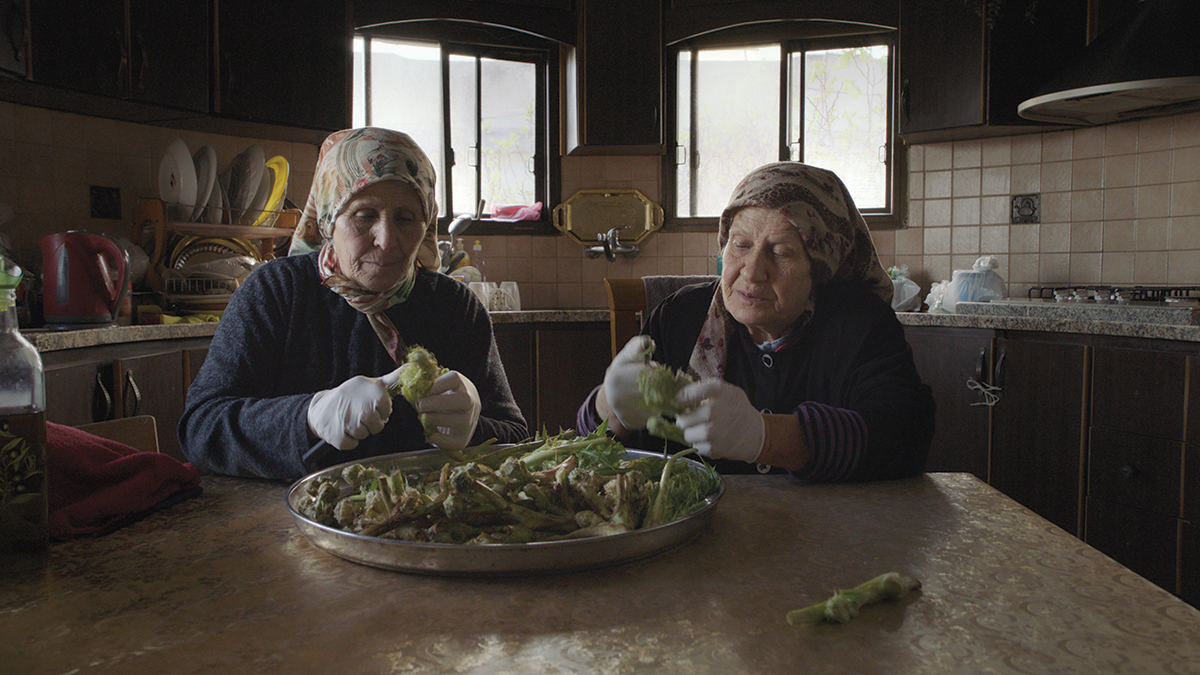
The tension in the Biennial between attention to simple phenomena and the geo-political demands that put pressure upon such simplicity recurred frequently during the Biennial’s opening weekend, as artist talks were haunted by the bombing of Gaza. Born in Palestine before moving to New York, Halaby made the point that her experiments with colour and computing should be seen as distinct from the political project of liberating her home. Her argument must have been lost on Indiana University, that recently cancelled a retrospective planned for their gallery. They could not separate her art from her Palestinian identity, although the autonomy of all experimental art is both creative and political, because freedom is the condition for its possibility.
Can ‘experimental’ even be nationalised? An argument along these lines took place in 2009 in South Australia, when the founders of the Experimental Art Foundation (EAF) protested at the addition of ‘Australian’ to its name (AEAF). Experimental art, they argued, is not national but universal. Similar tensions are implicit in this recovered history of experimental art at the Taipei Biennial, where an interest in a universal affectivity represented by installations and videos collides with the politics of the docufictions in its film program.
A disagreement between Pau and Halaby about abstraction is instructive here. In a discussion during the Biennial’s opening weekend, Pau insisted that abstraction is ambiguous, while Halaby argued that abstraction reflects the patterns of nature and our perception of them. She abandoned computers when she felt they became too complicated and corporate in the late 1990s and lost their capacity to mimic natural forms. The difference between Pau and Halaby is of core relevance in East and South-East Asia, where artists took an interest in experimentalism amid the political instability of state regimes. Freedom was always provisional in Pau’s Hong Kong, as it was in China, the Philippines and Taiwan during the 1980s. In these and other places, state power was always—and remains—ready to step in and change the conditions in which art could be made, and what kind of art could be made.
As the pandemic fades in memory amid new wars and an escalating climate emergency, experimental art’s debt to a global politics of freedom from state authority becomes more visible than ever. The 13th Taipei Biennial's ‘Small World’ attempt to return to an experience of art that is more immediate can only take place because it is insulated from threats that are both political and planetary. In Pau’s Hong Kong people are now calling themselves the ‘last generation’ of Hong Kong people, as the city is swallowed up by China’s imperialism. It’s likely that we are all ‘of a last generation’, both fragmented and brought together by technology’s differentiation and unification. Its intimacies and alienations will continue to play out as we witness the eclipse, not only of nature, but of the freedom necessary for art to be made, exhibited and seen.
